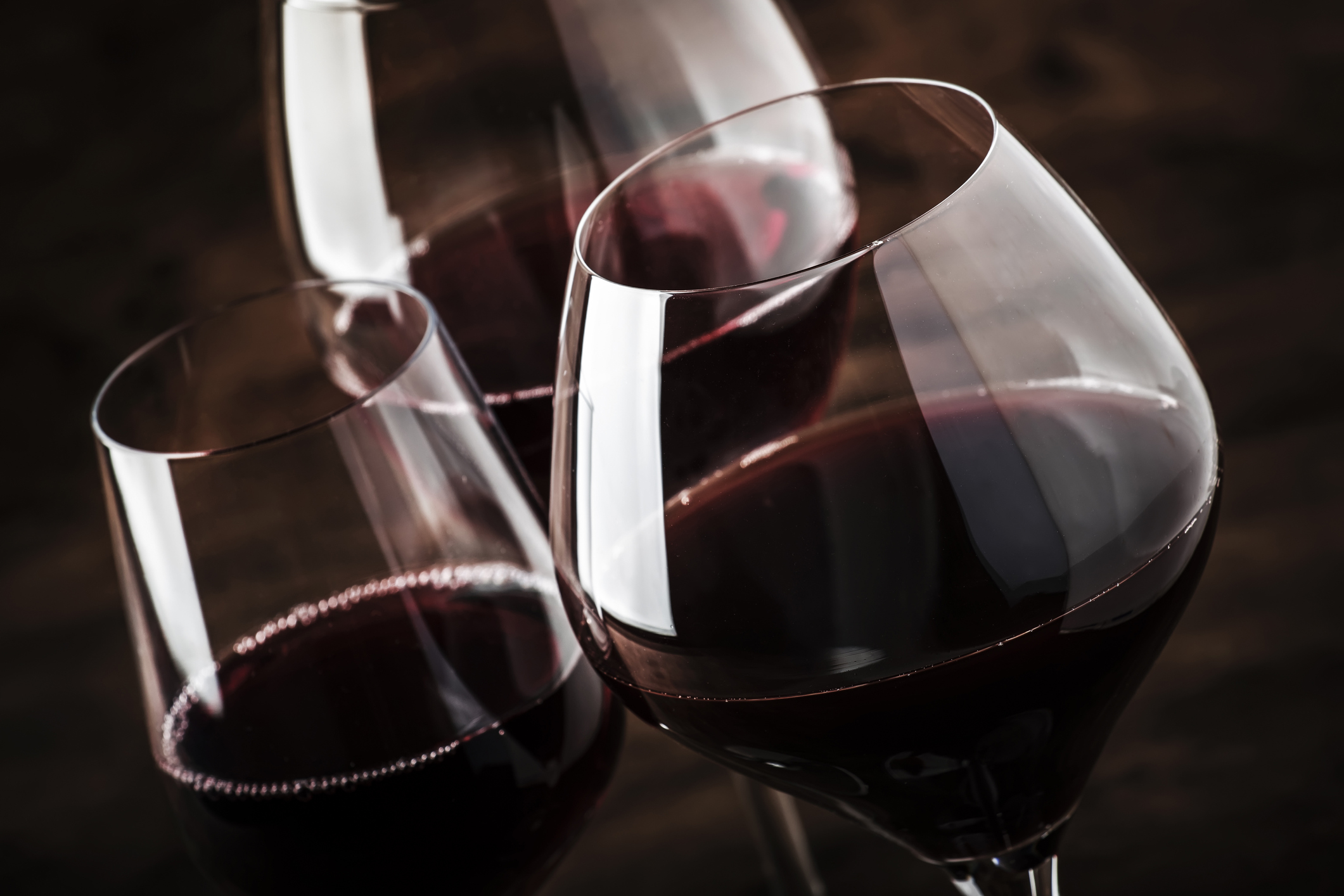The Long Pour: Enjoying the Wines of Sicily

Sicily may currently be Italian, but its lands and people are a veritable kaleidoscope of cultures, religions, and tribes. Sicilians boast that they are bastardi puri (“pure bastards”)—the product of ethnic overdose.
The island is an exotic combination of seemingly disparate parts: grand Roman theatrum, intricate Arabic mosques, Spanish baroque palazzi. If you’re (like me) familiar with the wild fennel, dusty eucalyptus, perfumed oleander and salinic breeze of the Californian coastline, you’ll be fascinated to see these same elements growing among almond trees, mountainside broccoli, and tropical flowers in shocking colors in Sicily. Goethe said it best: “To have seen Italy without having seen Sicily is not to have seen Italy at all, for Sicily is the clue to everything.”
RELATED: Thirsty for some Beaujolais for the holiday season?
When I visited Sicily earlier this year, I discovered that the island is home to 138 different D.O.P. items. The D.O.P. designation can apply to any food or beverage that is prepared, processed and produced within a certain geographical region – and entirely by traditional, delineated means. The vegetables and fruits found on Sicily (such as the almonds of Noto, the late tangerine of Ciacuilli, the artichoke of Menfi, the capers of Pantelleria, the pistachios of Bronte) are the “Grand Cru” of Italian produce – so much so that their cultivation (as is the case with the pistachios) sometimes takes precedence over grape growing – even in a prestigious appellation such as Mt. Etna. The DOP meats, cheeses and seafood are just as impressive – Iblei Mountain pork and Gambero Rosso from the Mazara Del Vallo (a.k.a. the Montrachet of shrimp). Even the salt is magical, harvested in Trapani – it’ll make your Maldon taste like Morton.
This rich culture of foodstuffs synonymous with the Italian tradition demands an equally prestigious wine industry. Despite its’ perceived lack of prestige in the States, for those in the know, Sicilian wines are more than equal to their agricultural cousins.
A strong, salty wind off the Mediterranean cools the warm, dry days – ideal for winemaking (and for afternoon naps after a hot beach day). The wines most likely to reach American lips are those of Etna, a region known for its striking volcano and rugged cliffs. Mt. Etna is always erupting, sometimes dramatically with explosions of molten rock, and other times with simply a vast plume of smoke.
Indigenous Sicilian Grapes to Know
WHITE WINES
Carricante: Light and refreshing with high acidity, fragrant herbs, lemon zest and salt Catarratto: full bodied and aromatic, wild orange, white blossom, hazelnut Grillo: a daughter of Cataratto, this sturdy grape was originally used to make Marsala
RED WINES
Nerello Mascelese: Similar to Pinot Noir; light color and tannins, bright acidity, ages well Nerello Cappuccio: rare and ancient, aromatic and nuanced, great for blending
Cappuccio mean cloak and the word’s diminutive form, Cappuccino, refers to the light brown color of the Capucin monk’s hoods.
Nero d’Avola: Dark purple with spicy dried fruit but light tannins
Standing on the slopes of Mt. Etna is the best way to deeply understand the concept of the Contrada system: Sicily’s own version of the great Crus of Burgundy. Hundreds of thousands of micro and major eruptions have covered the mountain in lava: sometimes dense and slow moving, other times like water flowing from a spring—an alchemy of minerals, plants, rock, and even animals. The land is truly alive—and with a fickle spirit, as a wayward lava vein could spill onto a vineyard and decimate the crop in a matter of minutes. Over the course of history, these lava formations have created a patchwork of different soil types and microclimates, further classified and divided by the 132 Contrade, or wine districts.
I drove through the Santo Spirito Contrada with Valeria, the owner of Palmento Costanzo winery, who further explained the Contrada system as I watched black, hard lava give way to lush grass and then into an orchard of almond trees. Santo Spirito is known for gentle, wide terraces with deep, rich volcanic ash and rolling green hills (reminding me of the emerald green hills of Ireland). The Palmento Costanzo wines from Santo Spirito are a perfect reflection of the terroir: luscious, silky, and sophisticated.
The Marchesa Contrada is a sharp contrast to Santo Spirito: craggy, windy and harsh, you’ll sense the presence of something majestic and primordial beneath your feet. The Guardoilvento (literally “look at the wind”) cuvée made by Tuscan winemaker Paolo Caciorgna (of Pietro Caciorgna winery) is a blend of grapes from elegant Santo Spirito and wild Marchesa, though the latter takes the reigns with notes of wild strawberry, savage Mediterranean herbs, and tart-sweet balsamic. Paolo makes wines for Sting and Bocelli, but in his eyes, the real rockstars are the people working the land. I met a few of these multi-generational Sicilians; some young and full of innovative ideas, others pushing 70 but still working the soil all day, with hands as dark and lined as the earth itself. They seemed to understand the capriciousness of the volcano as an experienced husband might understand the ebb and flow of a mercurial wife.
Moving to the West coast of the island you’ll find peaceful hills and untouched beaches, a world away from the glamorous summertime crowds of Taormina and the punishing force of Etna. This is the home of the Di Giovanna family and vineyard. Certified Organic and in operation for over 150 years, Di Giovanna is currently helmed by German-Sicilian Gunther, his brother Klaus, and his dynamic wife Melissa, a Philadelphia native. A strong female, her American sensibilities (and a dose of German precision) makes Di Giovanna’s wines a perfect gateway drug to the world of Sicilian wines. Their Grillo is a Hamptons favorite every summer at Calissa and is delicious as an aperitivo or paired with a whole grilled Montauk fish.
Walking through the medieval streets of Sambuca di Sicilia, you’ll see mostly older Sicilians selling oranges, fennel and clothing on the streets, shouting to each other in slang and disappearing into arched stone doorways. It feels a bit more ancient and quiet and mysterious than I’d imagined, but this was but one moment in the island’s vast history. Save for one or two other famous crossroads, it’s difficult to imagine a place in the world that has been more embattled, inhabited, won, lost, sacked, and absorbed into an empire.
Whatever appears as old and ancient is likely comparatively new. Similarly, though it is regarded as a “hot” new wine region, loved by wine geeks for its strong sense of place, food-friendly acidity, and perhaps for its relative obscurity compared to the canon of American and French wines preferred on the East end; Sicilian wine cultivation hasn’t really been new since 4000 BC.
This sentiment is the main theme of one of Italy’s most iconic books, the Leopard, In which a Sicilian prince states that, “if we want things to stay as they are, things will have to change.” I hope they don’t change too much.
Taste Sicily From Home
Try a fantastic example of Sicilian wine, available at a special price all December at Calissa.
Carricante/Cataratto, Palmento Costanzo, ‘Mofete Bianco’
Oregano, bright citrus, racing minerality, with a hint of smoke and salt. Delicious with a whole grilled fish or Greek Salad with lemony dressing.
James Mallios and Kylie Monagan are Partners in Calissa Restaurant. Visit Calissa at 1020 Montauk Highway in Water Mill and at calissahamptons.com.



